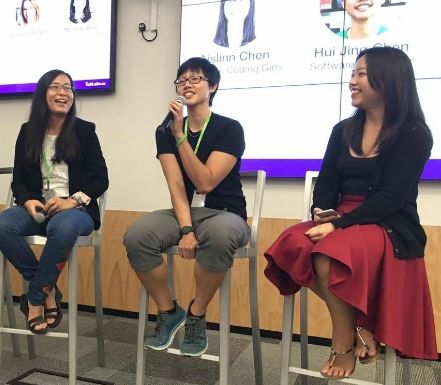What's up with the Internet of Things?
The Internet of Things (IoT), constructed by connecting smart objects to the internet, is the latest frontier in digital technology which offers tremendous potential for Australian tech enterprises to expand into the Asian market.

Cisco estimates that 50 billion devices will be connected to the internet by 2020. A significant proportion of these devices will be in Asia where rapid urbanisation, massive populations and the rise of the middle-class have all driven up the demand for leapfrogging technological solutions such as IoT for machine-to-machine (M2M) communication everywhere, from homes to large-scale infrastructure projects.
IoT opens up a future in which all kinds of machines, from wearables to medical devices, household appliances to utility grids will be connected to the internet and will be able to relay vital information quickly and efficiently, thus reducing response time in the event of a crisis, be it a fridge breakdown, earthquake or a medical emergency.
So where do we find dependable resources that provide step-by-step guides to the world of IoT? What are the companies that are poised to do well? And how do we keep track of the latest developments? Below, I have outlined a few resources and links to address these points.
Books on the Internet of Things
There are some fantastic books that are indispensable for developing knowledge of the concepts of IoT and their potential to rewrite human history.
1. The Silent Intelligence: The Internet of Things by Daniel Kellmereit and Daniel Obodovski talks about the history of IoT, current trends and the future of cities, homes, transport and health infrastructures being connected using IoT technology. They cover stories from top veterans in the space and bring together a lot of knowledge that is currently largely hidden from mainstream society. This is a great introductory book for understanding the disruptive potential of this fascinating field.
2. The Second Machine Age: Work, Progress and Prosperity in a Time of Brilliant Technologies is a New York Times bestseller by Erik Brynjolfsson and Andrew McAfee which narrates how the evolution of hardware, software and digital technologies in wired and smart devices will change the nature of how human society operates in the near future. Connected and intelligent machines of the future will carry out complex tasks such as medical diagnosis with greater precision than humans. While smart machines will become cheaper and much more accessible, their advent will also reshape our economies and workforces in brave new ways.
3. Getting Started with the Internet of Things is a book by Cuno Pfister that introduces many DIY IoT projects for anyone with basic programming skills. It’s a great hands-on book for anyone interested in delving deeper into the subject and perhaps looking at being an entrepreneur in the field. Interestingly enough, while many large corporations are investing significantly in IoT, analysts predict that the biggest innovations will come out of individual entrepreneurs and small startups. Hence, initiatives to democratise IoT is a step forward in the right direction.

IoT Blogs
Noticing the tremendous opportunity, several tech giants have made large investments in IoT and are at the forefront of product development and innovation. For anyone looking to learn about the latest developments in IoT, the blogs of IBM, Microsoft and Cisco are great resources to keep up with this rapidly changing technological horizon.
I particularly found the newly launched IoT platform by Samsung called Arktik Cloud, that enables connectivity between embedded devices and applications to be very fascinating. This will enable companies to come up with IoT solutions for new markets and expand their revenue streams.
Hot Asian IoT Startups
Many parts of Asia have traditionally been the manufacturing hub of electronics and computer hardware, whilst the latest design and software has come from the West. Now, with the advent of IoT, it seems that the trend in innovation in both hardware and software is shifting to the East. Places such as Hong Kong, Singapore and Taiwan are sprouting IoT startups in response to the technological need of the region. I have profiled a couple of these companies below.
1. Klikr of Hong Kong has developed a small Bluetooth product that can be stuck to any infrared remote controlled device at home such as the television, Blue-Ray player or air-conditioner and it can then be easily operated via a smartphone app, thus getting rid of the need for multiple remote controls.
2. Xped originally from Singapore and now listed on the ASX makes use of ADRC technology to connect any device from any manufacturer to the smartphone using a single tap. They also have a smartphone app and hence they provide a great platform for manufacturers to create IoT technologies for home consumers without having to build their own dedicated platforms that saturate the market and confuse the consumer.

Currently, all the stars are aligned for growth in the IoT sector. Big players are supportive, there is a multi-billion dollar market in the heart of Asia and there is no dearth of innovation. This presents the right opportunity for Aussie startups to make their mark in this vibrant and very lucrative space.





